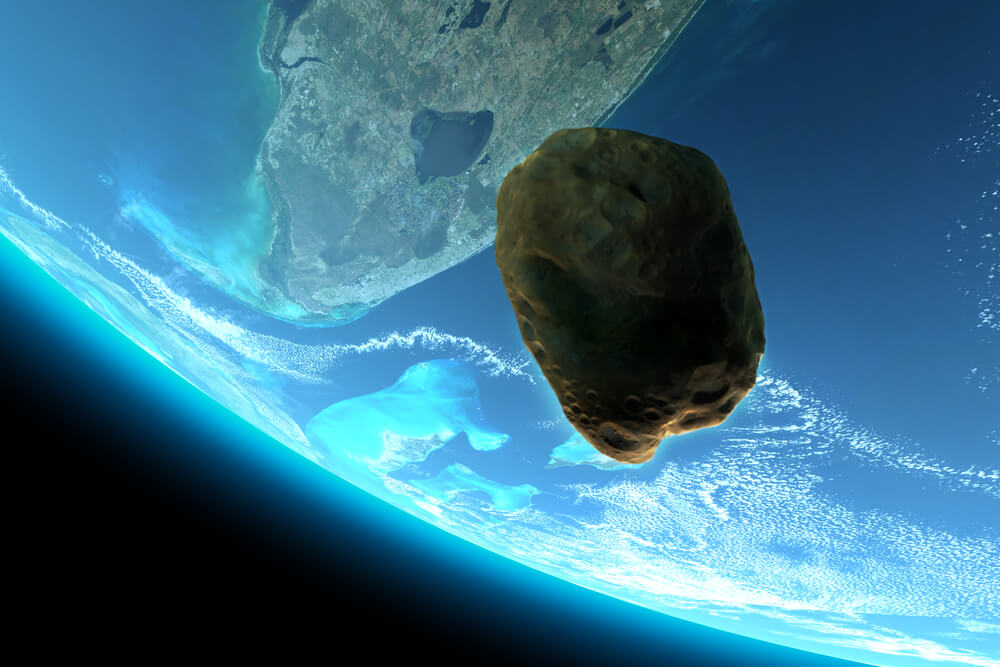Save the Earth: Americans and Europeans unite in the fight against asteroids
NASA will launch the Dart asteroid trajectory changing program next year. If this is not done, then the Earth may be significantly damaged in the future due to a possible collision with large asteroids, writes News.ru

Фото: Depositphotos
According to Europeans, the NASA initiative alone is not enough for success: Dart needs the help of another program - Hera. Both projects will also deal with space debris that interferes with the work of near-Earth satellites.
The harsh truth is that our life today is completely dependent on the near-Earth space - the UK government now classifies this space as one of the 13 most important sectors of the country's infrastructure. And it needs protection, пишет The Guardian.
NASA reported testing Dart technology back in the 2017 year. The invention of the Americans is designed to prevent the collision of the Earth with dangerous asteroids due to the deviation of asteroids from their trajectory through a kinetic impact. Europeans, in turn, are launching their space program, where the emphasis is on preventive measures, mainly on the timely detection of danger. A mission called Hera also intends to protect the planet from asteroids. But that is not all. The program also aims to warn earthlings about changes in space weather.
On the verge of trouble
On 25 of July 2019 of the year, an asteroid larger than 130 m in diameter flew past our planet at a distance equal to one fifth of the distance to the Moon. From an astronomical point of view, it is literally "in the balance". If he collided with the Earth, the consequences would be disastrous. Astronomers call asteroids of this size "city killers." It’s easy to understand why. In February 2013, a similar meteorite appeared in the sky above Chelyabinsk, measuring only about 20 m across. It exploded at an altitude of about 30 km to Earth, creating a shock wave that broke the windows of houses, about 1500 people were affected by it. If an asteroid, the size of which was 130 m, appeared in the sky above Chelyabinsk, then instead of breaking windows, it would overturn entire buildings.
Specialists of the European Space Agency (ESA) believe that in the fight against asteroids, the most viable option is the so-called kinetic shock element - what NASA offers. But at the same time they are convinced of the importance of the observations preceding the strike.
The best we can do at the moment to protect the Earth is to search for approaching dangerous asteroids, study their physical properties and see if we can move them out of orbit.
Ideally, Dart and Hera should work together. In the first program, the spacecraft crashes into an asteroid that is dangerous to humans. At the same time, Hera with exceptional meticulousness measures everything that happens. Together, two space programs constitute a mission to assess collisions and asteroid deflection (Aida). True, NASA has gone far ahead and is already preparing for the first take-off, while the Hera program in 2016 was not approved by the European ministers of science. This threw the Europeans back three years, however, if approval is received in the 2019 year, ESA will still have time to “jump into the last carriage”. If the ministers say no again, the mission will perish. Dart, left without Hera, can not cope, according to European scientists.
Observations within the Hera program will reveal the composition and physical structure of the asteroid Dart is targeting. This is vital data for planning how to deflect another asteroid when it is actually on its way to a collision. Without Hera, any attempt to deviate will become an event from the realm of probability and hope, and when it is used, asteroid hunting becomes an exact science.
Most importantly - weather in space
How to destroy asteroids, everyone knows who watched the movie "Armageddon." Space weather is a completely different matter. It is created by the magnetic activity of the Sun: subatomic particles, which form the basis of the turbulence arising from this, carry electrical energy, which can burn sensitive electronics in space and on Earth. The vulnerability of mankind in this regard is only growing, because today we rely heavily on satellites and electric networks, and they are especially susceptible to damage and destruction as a result of space weather.
In the 1989 year, a solar storm damaged Quebec’s hydropower equipment worth more than $ 10 million, leaving 6 million people without electricity for nine long hours. Blackout went down in history as the Carrington Event. Representatives of the British Space Agency consider it "the most reasonable of the worst-case scenarios."
In 2017, London Economics, a policy and economics consultancy, examined the impact of possible disruptions to global satellite navigation systems, such as Galileo or GPS, on the UK. Experts concluded that the failure of these systems for five days will cost the country £ 5,2 billion. Space weather is listed in the National Risk Register among factors that the UK government considers to be significant potential threats.
Currently, all scientific satellites and similar spacecraft show signs of wear. Having lost these “aged in orbit” devices, humanity will be virtually blind.
Space junk

Фото: Depositphotos
The problem of space debris is the work of humanity itself. At the dawn of the space race, the United States and Russia launched rockets into orbit, not worrying about what would happen to the spacecraft after the end of the mission. As the writer and screenwriter Douglas Adams once wrote: “The space is big.” Currently, more than 1 million space debris fragments larger than 1 cm are in orbit around the Earth. Each of them can collide with another, creating hundreds of thousands more pieces of space debris. About half of the debris existing in space today is the result of only two incidents: this is a guided 2007 test of the year when China blew up its own satellite with a rocket, and, second, an accidental collision in 2009 between a non-functioning Russian satellite and a working American.
Read also on ForumDaily:
NASA investigates the first crime in space: how the law works there
NASA has found plausible signs of life on Mars
Subscribe to ForumDaily on Google NewsDo you want more important and interesting news about life in the USA and immigration to America? — support us donate! Also subscribe to our page Facebook. Select the “Priority in display” option and read us first. Also, don't forget to subscribe to our РєР ° РЅР ° Р »РІ Telegram and Instagram- there is a lot of interesting things there. And join thousands of readers ForumDaily New York — there you will find a lot of interesting and positive information about life in the metropolis.











